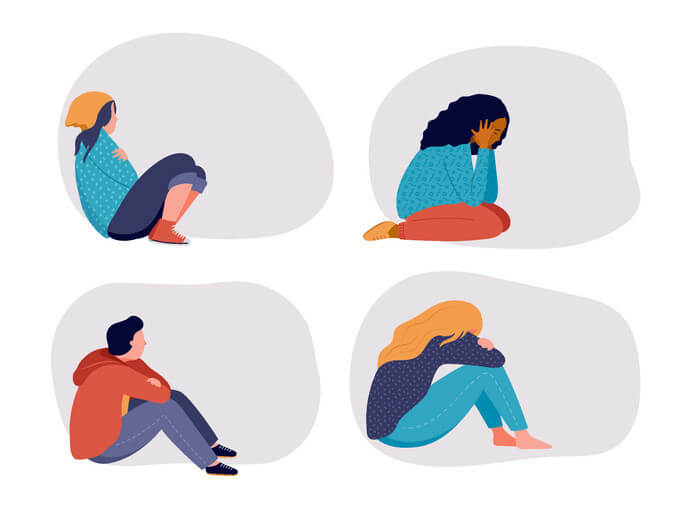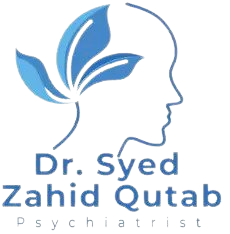
Children and teens can also develop mental health conditions as adults but their symptoms can be different. Mental illness in children and teenage groups is very hard for parents to identify at an early stage . This will help you to understand how you can recognize early warning signs of mental illness in children and help your child.
Mental health disorders in children are defined as “ consistent delays or disruptions in developing age appropriate patterns of thinking, behaviors or emotions .
These problems are enough to disrupt children’s ability to function well at home, in social situations or in school.”
It becomes difficult to understand mental health disorders in children because normal childhood development also involves consistent growth and change.
The symptoms of a disorder may also present differently depending on a child’s age and most importantly children are not able to explain how they feel or why they are behaving a certain way.
A lot of other factors can also prevent parents from seeking care for a child. For example, parents might be concerned about the stigma associated with it , the use of medications at such an early age.
Mental health disorders in children may include the following:
This is characterized by delaying milestones in childhood such as delay in standing , walking or talking according to age .These children lag behind their peers.
Sometimes, even milestones are normal but later on in life. They have difficulty understanding or comprehending anything taught at school. They would have a history of repeated class failures or seldom can pass beyond 8th grade.
They also have decline in social interactions, daily problem solving or going to shop alone .Some children have difficulty in arithmetic and money calculations .They consistently need family support to move on in life.
It can manifest as persistent fears or worries that disrupt their ability to function in play, school or typical age-appropriate social situations.
Diagnoses include social anxiety or generalized anxiety disorder.
Children with ADHD have significant difficulty with attention span , may also include impulsive behaviors or hyperactivity or in some combination of both.
They are unable to concentrate on one particular thing or unable to sit relaxed at a specific place or even in a chair. They also tend not to complete the given tasks at a given time.
Autism spectrum disorder is a specific neurological condition that appears in very early childhood ,usually before the age 3.
A child with this disorder has difficulty in maintaining or communicating and interacting with others. As their body starts involuntary movements whenever , they try to speak or initiate a movement voluntarily.This is a life long illness but with proper management and treatment , they tend to get along with life.
Eating disorder is a preoccupation with an ideal body image, distorted thinking about weight resulting in unsafe eating or strict dieting habits. It is usually seen in teenage girls .
Eating disorders such as anorexia nervosa (extremely low body weight or an intense fear of gaining weight as a result of it starts controlling their weight and body image/shape by starving or eating less.
Other eating disorder is Bulimia nervosa :This can become life-threatening eating disorder. People with bulimia may secretly binge (eating large amounts of food with a loss of control over the eating ) and then purging (trying to get rid of the extra calories )by self Induced vomiting ,using laxatives,or weight loss medications .
Simple Depression or a Bipolar disorder results in extreme mood swings between depression and extreme emotional or behavioral highs that may become risky or unsafe.
PTSD is prolonged emotional distress, distressing memories, nightmares and disruptive behaviors in response to physical violence or sexual abuse, or other traumatic events like death of a parent or car accident etc
It has very strong impact on the life of children as well as adults.
Schizophrenia is a serious mental disorder , it has been seen that most adult patients of schizophrenia, has a history which shows symptoms usually start appearing in childhood but often neglected .
They tend not to engage with others at school or even with family, always remain preoccupied with themselves at school and even at home trying to isolate themselves from others.
Children are diagnosed with symptoms and how the condition is affecting a child’s daily life. To make a proper diagnosis, your child has to be evaluated by a specialist, such as a psychiatrist and psychologist. The evaluation might include:
· Applying Standardized assessments and questionnaires for child and parents
Treatment options include:
In some cases psychotherapy alone or in combination with medications. It depends on the age and severity of symptoms.
Psychotherapy:
Psychotherapy is also called talk therapy or behavior therapy. Psychotherapy is a process to address mental health concerns by talking with psychologists and psychiatrists.
In young children, psychotherapy can include play time / games, also talks about what happens while playing. During psychotherapy, children and adolescents are taught, how to talk about thoughts and feelings, how to react to them, and learning new behaviors and coping skills like problem solving or anger control etc
Medication:
Mental health professionals might recommend a medication — such as a stimulant, antidepressant, anti-anxiety medication, antipsychotic or mood stabilizer, as part of the treatment plan. This will explain risks, side effects and benefits of drug treatments.

Dr Syed Zahid Qutab is an experienced and best psychiatrist in Lahore who has dedicated his life to helping people suffering from mental health issues.
Best psychiatrist in Lahore,
387-E Khayaban-e-Firdousi, near Allahu chowk, Block E Phase 1 Johar Town, Lahore, Punjab 54782
Days and Timings:
Monday 03:00pm to 10:00pm
Wednesday 03:00pm to 10:00pm
Thursday 03:00pm to 10:00pm
Friday 03:00pm to 10:00pm
Sunday 03:00pm to 10:00pm
For appointment: 0321 1439754
Days and Timings:
Saturday 02:00pm to 09:30pm
For appointment:
055-4277072
055-4277073
055-4277074
For appointment: +92 321 1439754